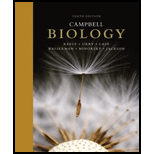
Concept explainers
Explain why human offifuing resemble their parents but are not identical to them.
To explain: Why human offspring are similar to their parents but they are not identical to them.
Introduction: Heredity is the process of the transmission of traits or heritable information to the next generation in the form of DNA. Humans reproduce sexually. During sexual reproduction, the genetic information from both the parents gives a unique gene combination in the offspring. The offspring resemble their parents but are somewhat different in their genetic makeup, which explains the genetic variation.
Explanation of Solution
Humans undergo sexual reproduction and inherit one chromosome of each homologous pair of chromosomes from each parent. Each somatic cell in humans consists of 46 chromosomes, which are two sets of 23 chromosomes each (maternal and paternal set).
During sexual reproduction, most of the variation arises during fertilization and meiosis. During meiosis, the homologous chromosomes randomly align with their homologs at metaphase I. According to the law of independent assortment of chromosomes, each daughter cell shows either maternal or paternal chromosome combinations. Thus, there is a 50% chance that the offspring gets maternal or paternal chromosomes or a combination of both. Secondly, crossing over forms the recombinant chromosomes that consist of a unique combination of genes in the offspring. The next aspect is random fertilization, which could be between any male gamete and female gamete. These factors relate to the fact that the offspring resemble their parents but are not exactly identical.
Want to see more full solutions like this?
Chapter 13 Solutions
Campbell Biology (10th Edition)
Additional Science Textbook Solutions
College Physics: A Strategic Approach (3rd Edition)
Physical Science
Introductory Chemistry (6th Edition)
Chemistry: Atoms First
Genetics: From Genes to Genomes
- Other than oil and alcohol, are there other liquids you could compare to water (that are liquid at room temperature)? How is water unique compared to these other liquids? What follow-up experiment would you like to do, and how would you relate it to your life?arrow_forwardSelection of Traits What adaptations do scavengers have for locating and feeding on prey? What adaptations do predators have for capturing and consuming prey?arrow_forwardCompetition Between Species What natural processes limit populations from growing too large? What are some resources organisms can compete over in their natural habitat?arrow_forward
- Species Interactions Explain how predators, prey and scavengers interact. Explain whether predators and scavengers are necessary or beneficial for an ecosystem.arrow_forwardmagine that you are conducting research on fruit type and seed dispersal. You submitted a paper to a peer-reviewed journal that addresses the factors that impact fruit type and seed dispersal mechanisms in plants of Central America. The editor of the journal communicates that your paper may be published if you make ‘minor revisions’ to the document. Describe two characteristics that you would expect in seeds that are dispersed by the wind. Contrast this with what you would expect for seeds that are gathered, buried or eaten by animals, and explain why they are different. (Editor’s note: Providing this information in your discussion will help readers to consider the significance of the research).arrow_forwardWhat is the difference between Uniporters, Symporters and Antiporters? Which of these are examples of active transport?arrow_forward
- What are Amyloid Fibrils? What biological functions are these known to perform?arrow_forwardHow do histamine and prostaglandins help in the mobilization of leukocytes to an injury site? What are chemotactic factors? How do they affect inflammation process?arrow_forwardCompare and contrast neutrophils and macrophages. Describe two ways they are different and two ways they are similar.arrow_forward
 Human Heredity: Principles and Issues (MindTap Co...BiologyISBN:9781305251052Author:Michael CummingsPublisher:Cengage Learning
Human Heredity: Principles and Issues (MindTap Co...BiologyISBN:9781305251052Author:Michael CummingsPublisher:Cengage Learning Biology Today and Tomorrow without Physiology (Mi...BiologyISBN:9781305117396Author:Cecie Starr, Christine Evers, Lisa StarrPublisher:Cengage Learning
Biology Today and Tomorrow without Physiology (Mi...BiologyISBN:9781305117396Author:Cecie Starr, Christine Evers, Lisa StarrPublisher:Cengage Learning Biology 2eBiologyISBN:9781947172517Author:Matthew Douglas, Jung Choi, Mary Ann ClarkPublisher:OpenStax
Biology 2eBiologyISBN:9781947172517Author:Matthew Douglas, Jung Choi, Mary Ann ClarkPublisher:OpenStax Principles Of Radiographic Imaging: An Art And A ...Health & NutritionISBN:9781337711067Author:Richard R. Carlton, Arlene M. Adler, Vesna BalacPublisher:Cengage Learning
Principles Of Radiographic Imaging: An Art And A ...Health & NutritionISBN:9781337711067Author:Richard R. Carlton, Arlene M. Adler, Vesna BalacPublisher:Cengage Learning Biology: The Dynamic Science (MindTap Course List)BiologyISBN:9781305389892Author:Peter J. Russell, Paul E. Hertz, Beverly McMillanPublisher:Cengage Learning
Biology: The Dynamic Science (MindTap Course List)BiologyISBN:9781305389892Author:Peter J. Russell, Paul E. Hertz, Beverly McMillanPublisher:Cengage Learning





